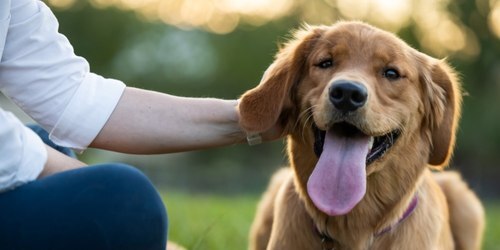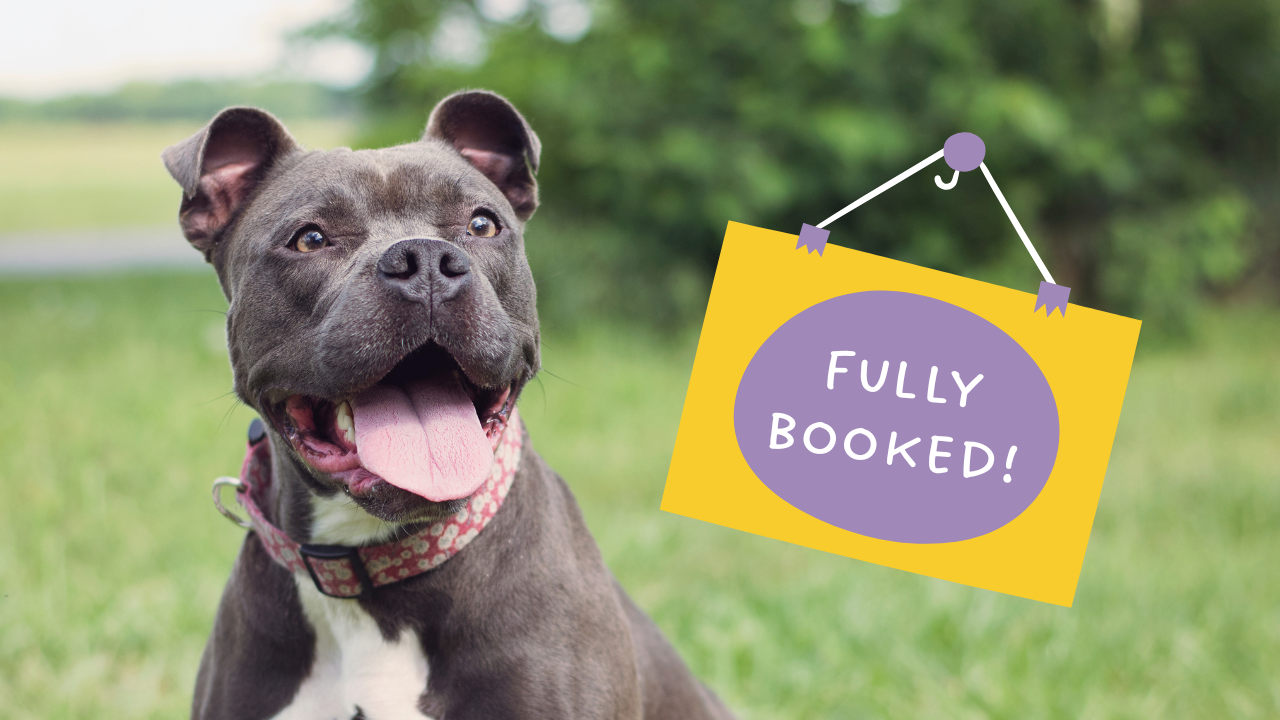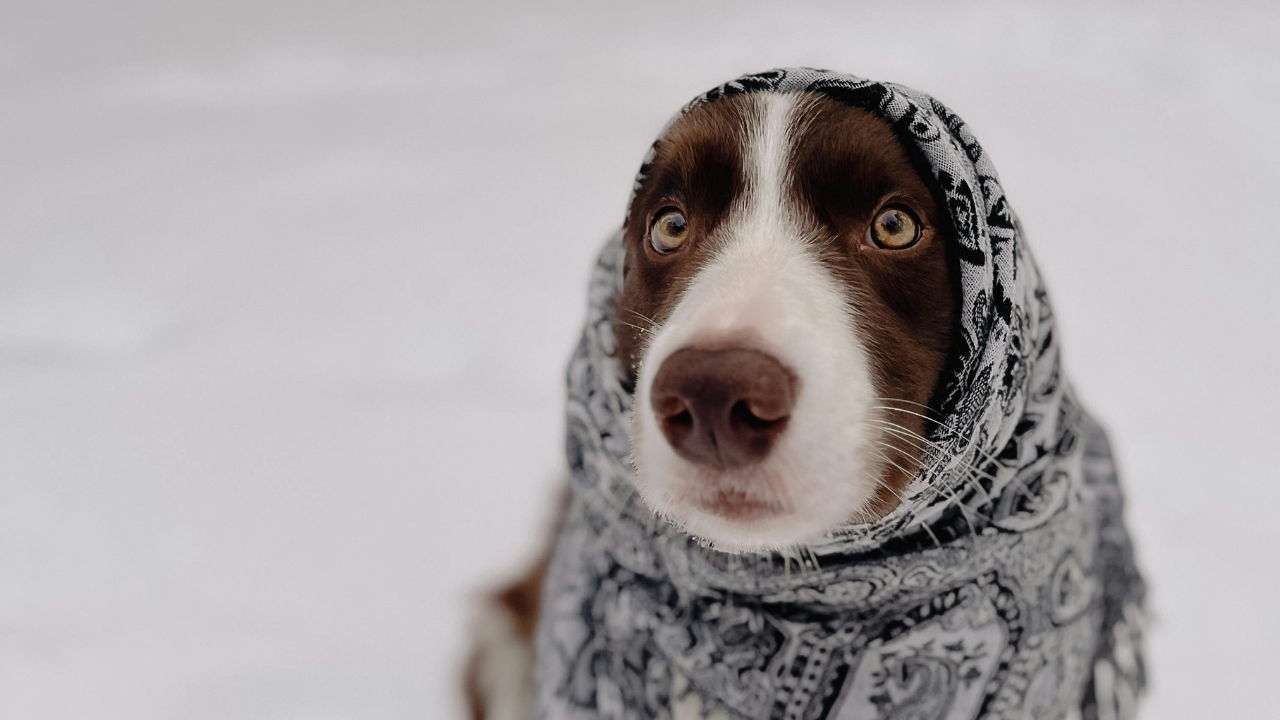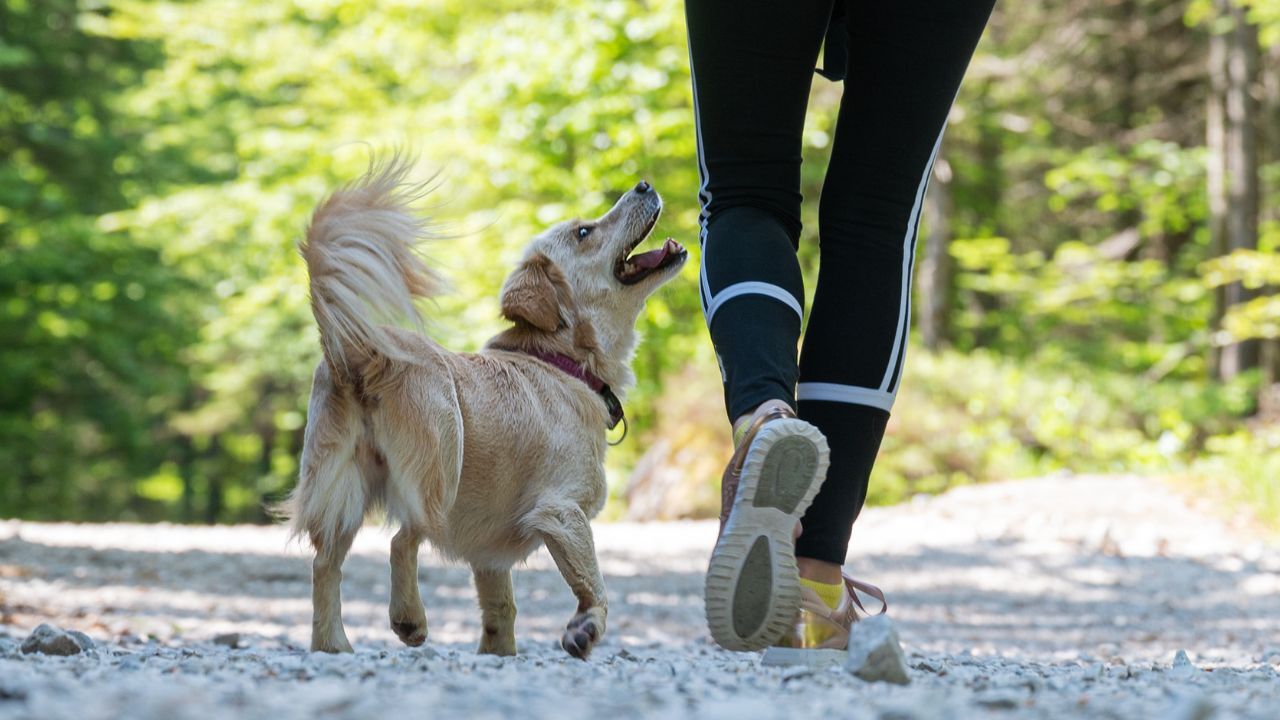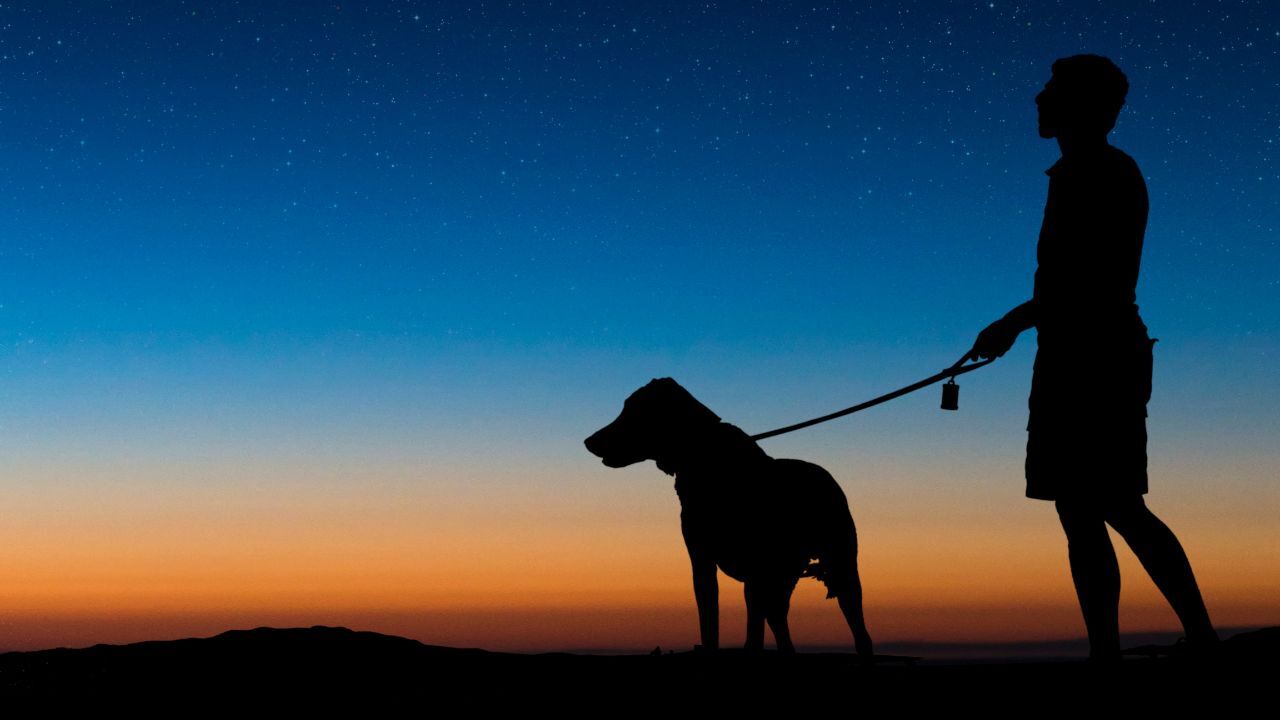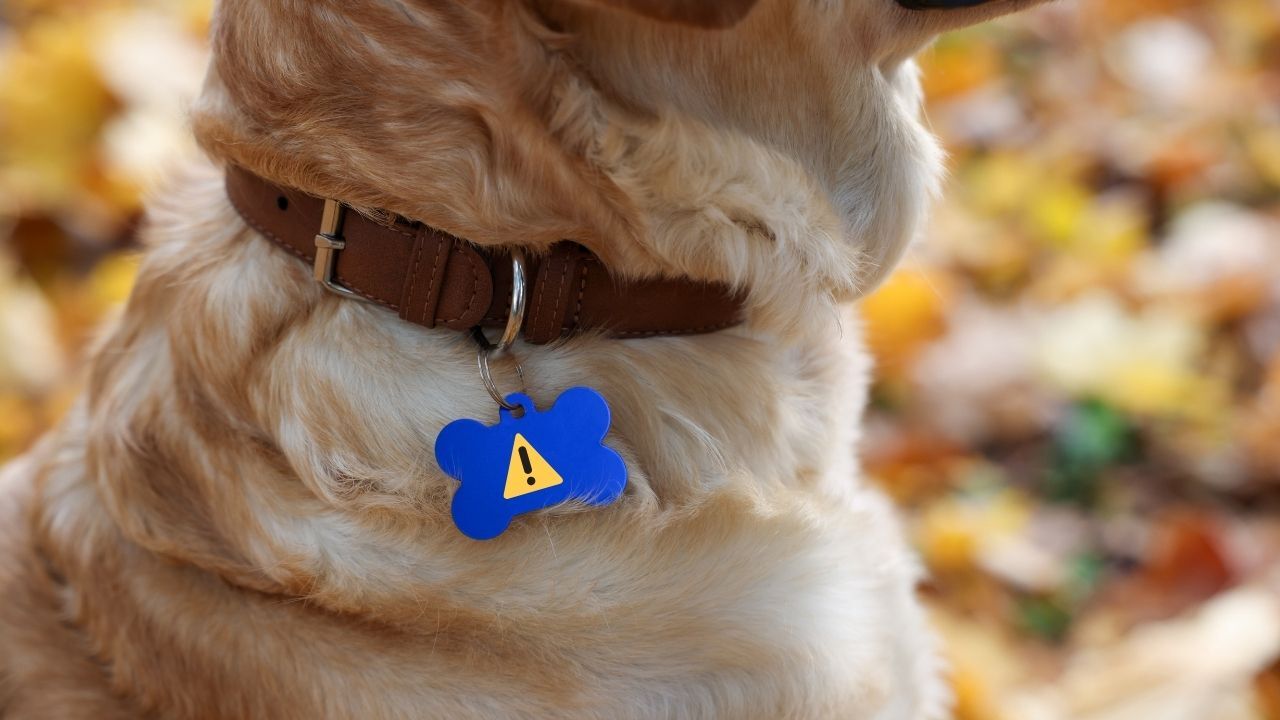Let’s be honest—we’ve all looked at our dog mid-snooze, head flopped at an impossible angle, legs twitching in dreamland, and thought: “Is my dog happy?” (…Right before wondering what on earth they’re chasing in their sleep. Squirrels? Giant floating bones? A delivery van?)
It’s a question that tugs at us more than we might admit. Because while we can’t exactly ask them how they’re feeling over a cuppa, we can learn to spot the signs. And the good news? Dogs are actually pretty expressive—once you know what to look for.
1. The Happy Tail (It’s Not Just a Wiggle)
Let’s start with the classic: the wagging tail. But not all wags are created equal. A loose, wide wag that involves the hips or even the whole body? That’s joy right there. A high, stiff wag? Might be excitement, but not necessarily the good kind.
Bonus points if your dog does that full-body “you’ve come home from Tesco like you’ve been gone ten years” wiggle. That’s basically dog for “I adore you.”
2. Ears, Eyes, and Everything In Between
A relaxed dog has soft features—ears in their natural position (unless they're perky by breed), soft eyes (no wide-eyed whites), and a gently open mouth, often with the tongue peeking out like they’ve just remembered life is great.
Compare that to tense posture, pinned-back ears, or constant alertness, and it might mean something’s bothering them.
You might also notice licking or yawning—and no, not just because they’re peckish or tired. These can actually be subtle signs of stress. A quick lick of the nose or lip (called a stress lick) is a dog’s way of saying, “I’m a bit unsure right now.” The same goes for out-of-context yawning—especially if they’ve not just woken up or settled down for a nap.
The key is context. If your dog yawns after a long snooze? Totally normal. If they yawn during a noisy moment or a new situation? That might be their way of coping with tension.
It doesn’t mean they’re miserable—but it’s their version of a polite “hmm, this is a bit much.” The more we learn to spot those little signals, the better we can support them.
3. The Zoomies: Chaos or Contentment?
If your dog occasionally tears around the garden like their tail’s on fire, congratulations—they’ve got the zoomies!
Also known as FRAPs (Frenetic Random Activity Periods, for the sciencey types), zoomies are a way for dogs to burn off a sudden burst of energy. They’re often a sign your dog is feeling playful, excited, or just very, very alive. Yes, it’s chaos. Yes, your flower beds may suffer.
That said, zoomies don’t always mean your dog is happy in the moment.
Take post-bath zoomies, for example. If your dog bolts around the house like a greased lightning bolt after a bath, even though they clearly despise getting washed, they’re not necessarily celebrating their newfound freshness. It’s more likely a combo of:
- Relief that the bath is over
- Trying to dry themselves off (your carpet is the new towel, sorry)
- Burning off stress or frustration
- Reclaiming their “smell” after you dared to shampoo it away
So, while zoomies can absolutely be a sign of happiness, they can also be your dog’s version of shaking off an icky experience or saying “well, that was dreadful, but at least it’s done!”
Either way, it's all part of their wonderful way of processing the world.
4. Sniffs, Snuggles, and Snoozes
Happy dogs feel safe enough to rest deeply—especially near you. That soft, sighing sprawl on the sofa or curled-up nap at your feet? That’s not just them being lazy (although, fair enough if it’s been a big day chasing leaves). It’s a sign they trust you and feel secure in their space.
They’ll also take their time sniffing on walks—because the world is basically a giant scratch-and-sniff book to a dog. That seemingly endless sniff-a-thon at the base of a lamppost isn’t dawdling or disobedience, it’s mental enrichment. They're gathering information, de-stressing, and engaging with their environment. It’s like reading the neighbourhood newspaper.
That said—context is everything.
A dog that sleeps all the time or seems to lack interest in things they used to enjoy might not be relaxed—they might be bored, lonely, or even depressed. Dogs can feel low too, especially if they’re not getting enough stimulation, interaction, or exercise.
And while leaning into you, following you around, or flopping over to show their belly often shows trust and affection… it’s not always a green flag.
- Following you constantly could mean they’re clingy due to separation anxiety.
- Leaning or pressing into you might sometimes signal insecurity—especially in new or overwhelming places.
- And a belly-up pose isn’t always an invitation for belly rubs (even if we really want it to be). In some situations, it can be a sign of submission or uncertainty—especially if their body seems stiff or their tail is tucked.
So, how do we tell the difference?
Pay attention to the whole picture. Are they wagging softly, body loose, eyes gentle? Or are they frozen, licking their lips, avoiding eye contact? It’s less about any one behaviour and more about how everything fits together.
Dogs are masters of subtle communication—and the more we tune in, the better we can understand how they’re really feeling.
5. Play Behaviour (With You and Other Dogs)
Dogs play in wonderfully goofy ways—play bows (that classic front-down, bum-up pose), zooming around in circles, or even tossing toys dramatically into the air like they’re putting on a one-dog show. It’s endearing, it’s chaotic, and it’s one of the clearest signs your dog is feeling good.
When a dog initiates play—whether it’s with you, other dogs, or even just a favourite squeaky toy—they’re engaging with the world in a confident, joyful way. Play is a natural stress reliever, a bonding tool, and honestly, just great fun for them (and for us, if we’re lucky enough to be invited).
That bouncy, relaxed energy is key. A happy, playful dog will move freely, often with a loose, waggy tail. They might get a bit cheeky, initiate a game of chase, or bring you a toy and then run off with it just to see if you’ll follow.
But if your dog is consistently avoiding interaction, ignoring invitations to play, or just seems emotionally flat or shut down, that’s something to take seriously. It doesn’t always mean they’re unwell—but it could be a sign of:
- Pain or discomfort
- Low mood or stress
- Fear or anxiety, especially in new environments or around certain dogs/people
- Lack of stimulation or enrichment
Some dogs are naturally more low-key or introverted (just like us!), but even calm dogs will usually show interest in something—sniffing, gentle play, a bit of engagement here and there. If that interest disappears, it’s worth gently exploring what might be going on underneath.
Happy dogs might not play all the time—but the desire to engage, be curious, and have a bit of fun is usually there in some shape or form.
And remember: play doesn’t have to be wild. For some dogs, “play” might look like calmly chewing a favourite toy while lying next to you. That still counts.
So... Is Your Dog Happy?
Probably, yes—especially if you’re reading blogs like this one and caring enough to ask.
Happiness for dogs isn’t about fancy toys or gourmet food (though, sure, they won’t say no). It’s about safety, respect, companionship, mental stimulation, good nutrition, and love.
Honestly? Most of us are doing better than we give ourselves credit for.
Keep showing up. Keep learning their language. Maybe give them an extra treat today—just because.
They’d do the same for you (if they had opposable thumbs and access to your snack cupboard).
